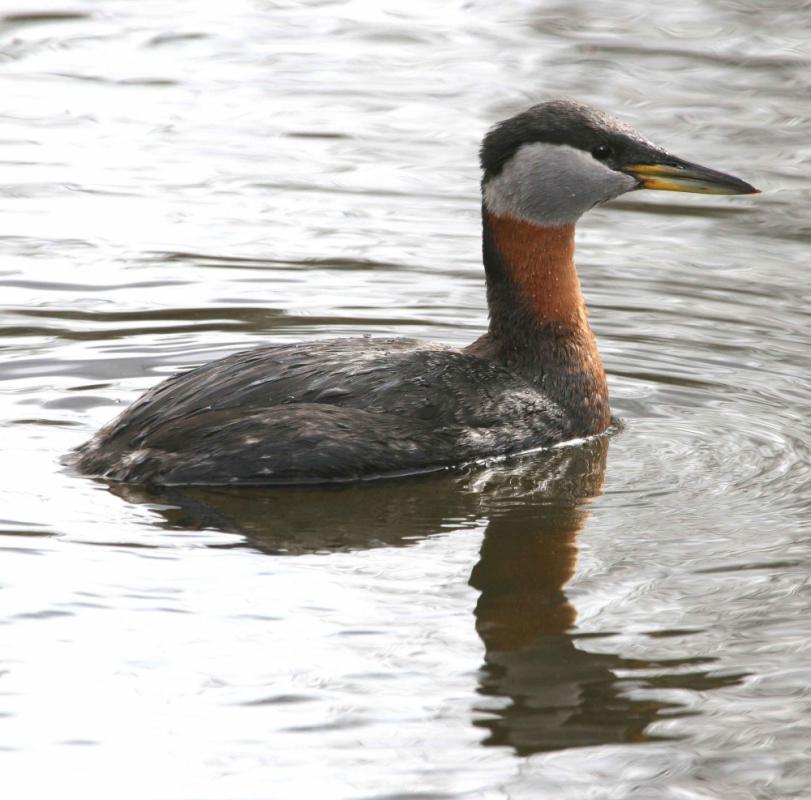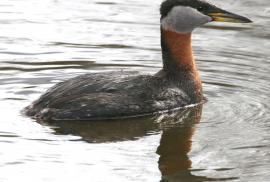Guide to Boreal Birds
Overview
Highly aquatic, grebes can swim with only their heads above water, concealing themselves in low pond vegetation. The young, handsomely striped in black and white, are often seen riding on the parents' backs. Like loons, grebes are expert divers, propelling themselves with their lobed toes as they pursue fish, crustaceans, and aquatic insects.
Description
18-20" (46-51 cm). A slender bird and, in the East, the largest regularly occurring grebe. In breeding plumage, has rufous neck, black cap, whitish cheeks, and long, pointed yellowish bill. In winter, mainly gray, with paler cheeks, pale (not necessarily yellow) bill. In flight, distinguished from loons by its smaller size and white wing patches.
Voice
Usually silent. On breeding grounds, a variety of squeaks, growls, and wailing calls.
Nesting
4 or 5 bluish-white eggs, stained brown, on a floating mass of dead reeds and grass in reedy lakes. Rarely nests in colonies.
Habitat
Ponds and lakes in summer; large lakes, coastal bays, and estuaries in winter and migration.
Range/Migration
Breeds from Alaska and northern Canada south to Oregon, Idaho, Ontario, and southern Minnesota; rarely east to southern Quebec. Winters south along coasts to southern California and Georgia, rarely to Florida. Also in Eurasia.



